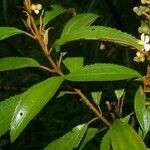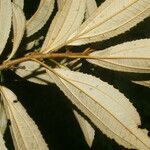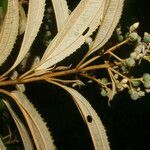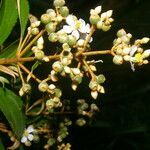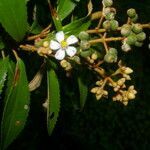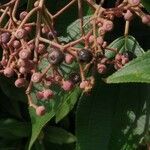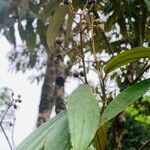A tree. It is usually about 10 m tall but can be 20 m all. The bark is brown with vertical cracks. The leaves are simple, opposite and narrow. They have teeth along the edge. The leaf size varies. They can be 10 cm long or longer. There are 3 main veins along the leaf with many cross veins. There is a rusty brown covering over many parts of the plant. This includes the underneath of the leaves. The flowers are in clusters at the tips of the branches. They have 5-7 white petals. These are 5 mm long. The fruit is purple-black and 1 cm across. It has many seeds. The fruit are edible.
